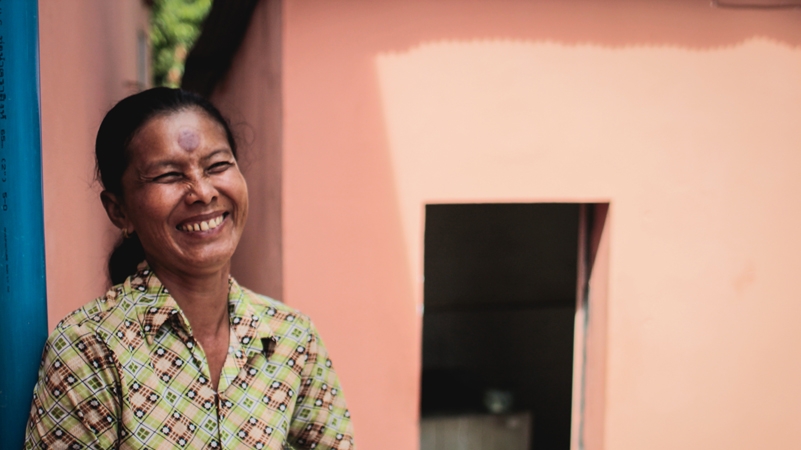In the early 2000s the Government of Cambodia set an ambitious goal to achieve universal sanitation coverage by 2025. In recent years efforts have been ramped up to achieve this goal, with a National Strategic Plan for Rural Water Supply, Sanitation and Hygiene approved by the Prime Minister in early 2014.
“With current strong collaboration and coordination among sector partners, I’m confident we’ll reach the 2025 goal,” said Mr. Pom Chreay, Director of the Department of Rural Health Care at the Ministry of Rural Development, the government agency mainly responsible for rural sanitation.
The World Bank Water Global Practice’s Water and Sanitation Program (WSP) is supporting the government to deliver sustainable sanitation service delivery at scale and advising the national government on its decentralization plans for the sector to ensure district and commune levels have the mandate to carry out sanitation programs.
Local district and commune capacity is key for successful sanitation promotion and allows those closer to the problem and more aware of the local context to bring together citizens and the local private sector to find solutions. Local governments are devoting more resources to sanitation, including finances. “Some communes now allocate part of their budget to sanitation, which is a significant step toward achieving universal access,” Virak Chan, a Water and Sanitation Specialist at WSP, explains.
Districts and communes are working with local NGOs and other partners to engage microfinance institutions for small loans to help poor households overcome the financial barrier to purchase a latrine. A nine-month sanitation finance pilot in Kandal Province led to 1,994 households purchasing latrines on credit, providing evidence that access to finance can accelerate uptake of improved latrines for households, including the poor. Access to credit for cash-constrained families is critical to ensure they have the opportunity to invest in a latrine. However, the extreme poor, those living under US$1.25 per day, often remain excluded from access to credit as they are perceived as unable to pay back the loan.
In addition to financing, innovations in product design, manufacturing, and distribution can help lower costs, making sanitation more desirable and accessible for everyone. This was already seen in Cambodia with The Easy Latrine, an affordable pour-flush latrine, the development and market introduction of which was supported by the World Bank. The estimated 170,000 units sold by local entrepreneurs since its introduction only 4 years ago, demonstrates that local enterprises can profitably produce and sell an affordable product for which a large low-income consumer segment is willing to pay. Examples such as these, which factor in the local context, consumer demand, and affordability, can help countries such as Cambodia in meeting their goals for universal sanitation access.


